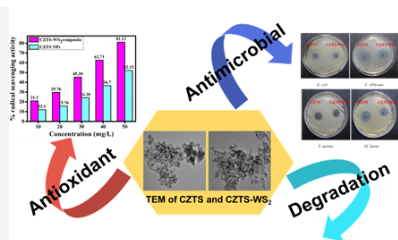Researchers Develop Efficient Photocatalyst to Degrade Antibiotics
Scientists have made an exciting breakthrough in photocatalysis, developing a new catalyst that can efficiently break down sulfamethoxazole (SMX), a common antibiotic. This discovery is important because it addresses growing concerns about how antibiotics in the environment can harm both ecosystems and human health.
Why is Antibiotic Contamination a Problem?
When antibiotics like SMX enter the environment, they create several issues:
Antibiotic Resistance: The overuse of antibiotics in nature can lead to the development of bacteria that are resistant to treatment, making infections harder to cure.
Ecological Impact: These antibiotics can disrupt the balance of local ecosystems, affecting plants, animals, and microorganisms.
Human Health: Long-term exposure to antibiotics in contaminated water can affect human health, potentially leading to health problems.
How was the Catalyst Developed?
The team of scientists, led by Prof. Devasish Chowdhury at the Institute of Advanced Study in Science and Technology (IASST), created the catalyst using nanoparticles from materials like copper zinc tin sulfide (CZTS) and tungsten disulfide (WS2). Here’s what went into it:
- They used common, non-toxic materials like zinc chloride, copper chloride, tin chloride, and tungsten disulfide.
- These materials were processed through a hydrothermal reaction, which involves heating them in water to form the catalyst.
- The final product is made from earth-abundant elements, meaning it’s cheap, safe, and environmentally friendly.
How does it work?
The new CZTS-WS2 composite works by breaking down sulfamethoxazole into less harmful substances. Key features include:
Degradation Mechanism: The catalyst transforms SMX into safer by-products, reducing its harmful impact on the environment.
Reusability: The catalyst remains effective even after multiple uses, which means it can be used over and over, making it cost-efficient.
How was it tested?
To test the catalyst’s ability to break down SMX, scientists used Liquid Chromatography-Mass Spectrometry (LC-MS), which helps identify the substances formed during the breakdown process. This analysis showed that the catalyst produced less harmful intermediates.
Catalyst Performance
The results were impressive:
- The catalyst showed over 80% efficiency in scavenging free radicals (unstable molecules that can cause damage).
- It also demonstrated antibacterial properties, meaning it could help reduce the presence of harmful bacteria in the environment.
This new CZTS-WS2 composite catalyst offers a promising solution for breaking down antibiotic pollution. It can potentially improve the way we manage antibiotic residues in the environment, reducing the associated risks to ecosystems and human health.
Month: Current Affairs - October, 2024
Category: Science & Technology Current Affairs








